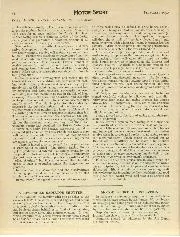
A low-priced radiator shutter
Most motorists are familiar with one or other of the various F.E.W. fittings for cars and engines, and a new accessory has now been added to their range in the…
A NEW ZENITH CARBURETTER
INSTRUMENT EMBODIES SEVERAL LATEST V-TYPE NEW FEATURES.
CARBURETTER design, like other branches of motor car development is never at a standstill, and the new V type Zenith carburetters show a further advance in easy-starting technique and the provision of a uniform mixture at all speeds.
The starting device is a miniature carburetter of tubular shape fitted above the main instrument. Operating the easy starting control moves a valve in the interior of the tube, putting it into communication with the induction pipe. When the starter-button is depressed, air is drawn into the tube through a venturi opening and passing over a jet supplied through a special channel from the float chamber, forms a rich but properly emulsified mixture on which the car can be manoeuvred and driven without damage. An automatic air valve weakens the mixture as the engine warms up, when the dash control can be returned to normal. The slow-running mixture is provided in the usual way by a jet and passage (numbered 1 and 2) opening into the induction pipe above the throttle. When this is rotated slightly, it uncovers the slow-running progression jet (3) and allows a greater quantity of mixture to be supplied. With a further opening of the throttle the suction above it becomes
less and less and is transferred to the lower end of the choke-tube. Instead of having separate jet-tubes for the compensating and main jets, as on the ” ” type, in the ” V” they share a common jet nozzle (4) which projects horizontally (in the case of the vertical instrument) into the air stream, and
which is cut off at an angle. The suction concentrated on the nozzle draws petrol from the passage (5) and from around the capacity tube (6). Further demands cause petrol to blow from the compensating and main jets (7 and 8) at the bottom of the float chamber and when it passes the passage from the well (6), now clear of petrol and in communication with the atmosphere, it is partly atomised by incoming air, this process being completed by coming into contact with the main air-stream through the choke tube.
Admitting, air to the petrol stream in two stages ensures that it shall be fully atomised, and the only remaining problem is to distribute it evenly throughout the bore of the induction pipe, so that each cylinder shall receive a uniform charge. This is effected by fixing a circular bar (9) across the choke tube opposite the jet nozzle. When the incoming air strikes it, a reduction of pressure occurs on the top side and attracts the petrol stream into it, and distributes it evenly in all directions. The ” ” type carburetter is available as a vertical, horizontal or down-draught instrument in sizes up to 30 mm Owners
of card fitted with carburetters of other makes are invited to try the new Zenith free of charge for one month.